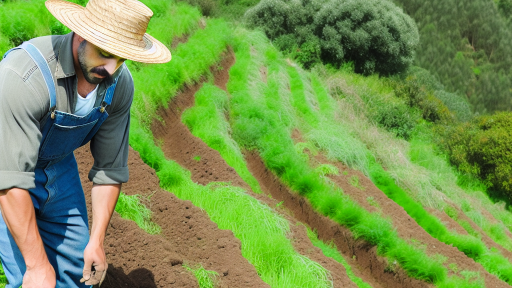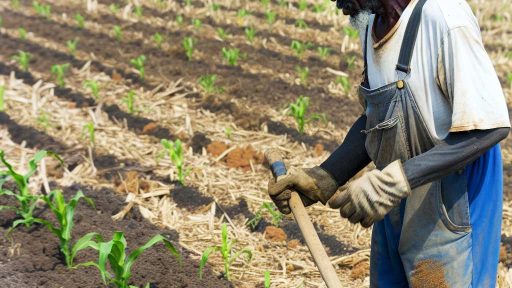Introduction to Pest Control and Crop Rotation
Definitions and Importance
Pest control refers to the management of agricultural pests.
It aims to protect crops and maintain agricultural productivity.
Effective pest control techniques reduce crop losses.
They also minimize the need for chemical pesticides.
Crop rotation is a farming practice that involves alternating crops.
This strategy helps improve soil health and fertility.
It disrupts pest life cycles and reduces disease incidence.
Both pest control and crop rotation are essential for sustainable agriculture.
They promote ecological balance and enhance biodiversity.
Moreover, these methods contribute to long-term farm viability.
Integrating pest control with crop rotation maximizes benefits.
This combination leads to healthier crops and increased yields.
Farmers who adopt these practices can achieve greater resilience.
Ultimately, effective pest management and crop rotation foster sustainable farming systems.
Understanding Pest Dynamics
The Impact of Pests on Crop Health
Pests pose a significant threat to crop health and yield.
Transform Your Agribusiness
Unlock your farm's potential with expert advice tailored to your needs. Get actionable steps that drive real results.
Get StartedThey can cause direct damage by feeding on plants.
Additionally, pests may introduce diseases that can devastate entire crops.
A single infestation can lead to substantial financial losses for farmers.
Diverse Crop Types and Pest Preferences
Different pests prefer specific types of crops for feeding and reproduction.
For instance, aphids commonly infest vegetables and ornamentals.
Conversely, certain beetles target grains and legumes.
Understanding these preferences helps in predicting pest outbreaks.
Crop Rotation and Pest Management
Crop rotation effectively disrupts pest life cycles.
By changing the type of crops grown in a field, farmers can minimize pest populations.
This practice also improves soil fertility and health.
Thus, rotating crops can significantly enhance pest control efforts.
Factors Influencing Pest Dynamics
Environmental conditions greatly influence pest populations.
Temperature and humidity levels can either promote or deter pest activity.
Also, the timing of planting and harvesting affects pest pressure.
Farmers must closely monitor these factors to optimize pest management strategies.
The Science Behind Crop Rotation: Mechanisms of Pest Suppression
Understanding Pest Dynamics
Pests adapt to their environments over time.
They often develop resistance to certain crops.
This resistance can lead to increased pest populations.
Effective management requires an understanding of these dynamics.
How Crop Rotation Works
Crop rotation disrupts pest life cycles.
By alternating crops, you can reduce pest numbers.
Different crops attract different pests.
This diversity limits the chances for pests to thrive.
Improving Soil Health
Healthy soil supports healthy plants.
Showcase Your Farming Business
Publish your professional farming services profile on our blog for a one-time fee of $200 and reach a dedicated audience of farmers and agribusiness owners.
Publish Your ProfileCrop rotation improves soil nutrients.
This process encourages beneficial organisms.
In turn, it helps suppress harmful pests.
Utilizing Companion Planting
Some crops repel specific pests.
For example, marigolds deter nematodes.
Integrating these plants enhances pest control.
Companion planting complements crop rotation strategies.
Long-term Benefits of Crop Rotation
Over time, crop rotation builds resilience.
Farms become less reliant on chemical treatments.
It also helps maintain pest populations at manageable levels.
This sustainable approach protects biodiversity and the ecosystem.
See Related Content: Organic Waste Solutions for Modern Farmers
Choosing Compatible Crops for Rotation
Understanding Crop Compatibility
Crop compatibility plays a vital role in effective pest management.
Choosing the right crops can disrupt pest life cycles.
This approach minimizes pest populations significantly.
Some plants attract beneficial insects that control pests naturally.
For instance, legumes enhance soil fertility and reduce specific pests.
Strategies for Effective Crop Rotation
Implement a diverse crop rotation schedule.
Diversity helps break pest breeding cycles.
Rotate crops with different nutrient needs to improve soil health.
Also, consider planting pest-repellent crops.
For example, marigolds deter nematodes and other pests.
Monitoring and Evaluation
Regular monitoring ensures successful crop rotation.
Assess pest populations periodically to determine effectiveness.
Modify your rotation plan based on the observed results.
Engaging local agricultural experts can provide valuable insights.
This collaborative approach enhances your pest management strategy.
Explore Further: Drip Irrigation Methods for Sustainable Farming
Case Studies: Successful Implementation of Crop Rotation in Pest Control
Case Study in Organic Farming
A small organic farm in Vermont implemented crop rotation effectively.
This farm grew potatoes one year, followed by legumes the next.
As a result, the legume roots improved soil nitrogen levels.
This rotation significantly reduced potato bugs over time.
Pest populations decreased, enhancing crop yield.
A Large-Scale Agricultural Experiment
A university conducted a large-scale study on a Midwestern farm.
This study focused on soybeans and corn rotation.
They observed a marked decrease in aphid infestations.
Researchers noted how different crop families affected pest life cycles.
Crop diversity proved essential in maintaining pest resistance.
Regional Benefits in Diverse Crop Production
A farmer collective in California adopted diverse rotation practices.
They experimented with vegetables and perennial crops.
Showcase Your Farming Business
Publish your professional farming services profile on our blog for a one-time fee of $200 and reach a dedicated audience of farmers and agribusiness owners.
Publish Your ProfileThis approach enhanced pest control through natural predators.
Additionally, it improved soil health and reduced chemical needs.
Farmers reported higher resilience against pest outbreaks.
Lessons from an International Case
A successful case in Europe highlighted integrated pest management.
Here, crop rotation complemented biological pest control methods.
Scientists found that alternate planting drastically reduced disease.
This collaboration also fostered knowledge-sharing among local farmers.
Community engagement led to better overall pest management strategies.
See Related Content: Maximizing Carbon Storage on Agricultural Lands

Integrating Crop Rotation with Other Pest Control Methods
A Comprehensive Pest Management Strategy
Crop rotation enhances pest control by breaking pest life cycles.
This method reduces pest pressure over time.
Furthermore, integrating it with other strategies increases effectiveness.
Combining Techniques for Optimal Results
Farmers should adopt a holistic approach to pest management.
Utilizing multiple control tactics works best for maximum effect.
For instance, pairing crop rotation with biological controls can yield great benefits.
Incorporating Natural Predators
Introducing beneficial insects helps maintain pest populations.
Ladybugs and lacewings effectively control aphid numbers.
Planting nectar-producing crops attracts these natural predators.
Utilizing Organic Pesticides
Organic pesticides work well alongside crop rotation.
These products have less environmental impact compared to synthetic options.
They provide targeted relief from specific pest issues.
Monitoring and Evaluation
Regular monitoring is crucial in a pest control plan.
Farmers should evaluate both pest populations and crop health.
This data allows for timely adjustments to rotations and control measures.
Educating Farmers
Training sessions on integrated pest management are essential.
Farmers need access to the latest research and techniques.
Such education fosters a deeper understanding of pest dynamics.
Community Collaboration
Farmers can benefit by sharing knowledge and experiences.
Collaborative efforts lead to a more effective pest management framework.
Community discussions can foster innovative pest control ideas.
Uncover the Details: Planning Diverse Crop Sequences for Sustainable Yields
Challenges and Limitations of Crop Rotation in Pest Management
Resistance Development
Crop rotation can lead to the development of pest resistance.
Some pests adapt quickly to changing crops.
This resistance can reduce the effectiveness of crop rotation strategies.
Complexity of Management
Implementing crop rotation requires careful planning.
Farmers must consider which crops will follow others.
Additionally, timing and coordination can complicate management efforts.
Economic Considerations
Changing crops may lead to reduced short-term profits.
Some farmers may resist rotation due to economic risk.
Expensive crop inputs can further complicate decision-making.
Showcase Your Farming Business
Publish your professional farming services profile on our blog for a one-time fee of $200 and reach a dedicated audience of farmers and agribusiness owners.
Publish Your ProfileSoil and Climate Variability
The effectiveness of crop rotation varies based on soil type.
Climate conditions influence crop success significantly.
Farmers must adapt their rotation plans to local environmental factors.
Knowledge and Training Gaps
Many farmers lack adequate knowledge about crop rotation benefits.
Additionally, training on best practices is often insufficient.
This lack of understanding can hinder effective pest management.
Market Demand Challenges
Specific crops may not be in high demand at all times.
Farmers face pressure to grow cash crops instead of rotating.
These market forces can deter the adoption of sustainable practices.
Future Trends: Innovations in Crop Rotation and Integrated Pest Management
Technological Advancements
Technological advancements are reshaping pest control strategies.
Precision agriculture tools enhance crop rotation efficiency.
Farmers now utilize drones to monitor crop health and pest presence.
This real-time data allows for immediate intervention strategies.
Data-Driven Decision Making
Data analytics enable farmers to make informed crop rotation decisions.
By analyzing soil health and pest populations, better plans can be developed.
Farmers can predict pest outbreaks based on historical data trends.
Biological Controls
Integrating biological controls improves pest management effectiveness.
Beneficial insects can be introduced to suppress pest populations.
This method reduces the reliance on chemical pesticides.
Sustainability Practices
Sustainability practices are increasingly important in agriculture.
Farmers implement diversified crop rotations to maintain soil health.
This approach enhances biodiversity and ecosystem resilience.
Collaborative Research Efforts
Collaboration between farmers, scientists, and agronomists drives innovation.
Research partnerships focus on developing sustainable practices.
These efforts lead to the creation of resilient crop varieties.
Integration with Livestock Management
Integrating livestock into crop rotation systems provides additional benefits.
Animals contribute to soil fertility through natural manure applications.
This method also helps control pests and reduces crop competition.
Adoption of Cover Crops
The use of cover crops is gaining traction among farmers.
Cover crops protect soil from erosion and improve soil structure.
They also enhance nutrient availability for subsequent crops.
Additional Resources
Cover Crops for Sustainable Crop Rotations – SARE
The Three Sisters of Indigenous American Agriculture | National …




